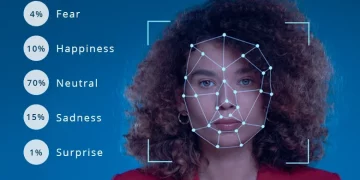Sleep is fundamental to human health, influencing cognitive function, emotional wellbeing, metabolic balance, and immune defense. Yet, millions worldwide suffer from sleep disturbances such as insomnia, fragmented rest, and poor sleep quality. Traditional remedies often provide limited relief, prompting a surge of interest in next-generation sleep technologies that promise to not only track but also actively improve sleep patterns. These innovations claim to “teach” users how to fall asleep faster, achieve deeper restorative sleep, and wake up feeling refreshed. But can technology genuinely rewire our natural sleep mechanisms? This article delves into the science, key advancements, potential benefits, and challenges of emerging sleep tech aimed at transforming how we sleep.
The Science of Sleep: Why Falling Asleep and Deep Sleep Matter
Understanding how technology might improve sleep requires a brief overview of sleep physiology. Sleep consists of several stages cycling throughout the night:
- NREM Stage 1 and 2: Light sleep phases where the body relaxes and the brain begins slowing down.
- NREM Stage 3 (Deep Sleep or Slow-Wave Sleep): Crucial for physical restoration, tissue repair, and immune function.
- REM Sleep: Involved in memory consolidation, emotional regulation, and brain plasticity.
Falling asleep quickly and spending sufficient time in deep sleep are essential for feeling rested and maintaining long-term health. Disruptions in these processes lead to daytime fatigue, impaired cognitive function, and increased disease risk.
Key Technologies Revolutionizing Sleep Improvement
1. Wearable Sleep Trackers with Biofeedback
Modern wearables go beyond passive monitoring. Devices equipped with sensors measuring heart rate variability, breathing patterns, and skin conductance provide real-time feedback. Some integrate biofeedback techniques that guide users to reduce stress and calm their nervous system, facilitating faster sleep onset.
2. Smart Sleep Environments
Technologies are increasingly designed to optimize bedroom conditions. Smart mattresses, adjustable lighting systems, and temperature controls can adapt dynamically to the user’s sleep stage. For example, cooling the room or bed surface during deep sleep phases enhances restorative processes.
3. Audio and Light-Based Therapies
Personalized soundscapes, white noise, and binaural beats are used to entrain brainwaves into sleep-promoting frequencies. Similarly, circadian lighting that mimics natural sunlight cycles helps regulate melatonin production and sleep-wake timing.
4. Transcranial Electrical Stimulation (tES)
Experimental devices use low-level electrical currents applied through the scalp to modulate brain activity, promoting deeper slow-wave sleep or faster transitions into sleep stages. Early clinical studies show promise in enhancing sleep quality and cognitive benefits.
5. AI-Powered Sleep Coaching
Artificial intelligence algorithms analyze individual sleep data over time, identifying disruptive patterns and providing personalized recommendations. These may include behavioral advice, relaxation techniques, or tailored interventions to optimize sleep hygiene.
Can Sleep Technology Actually Teach Us to Sleep Better?
The key distinction lies between tracking and intervening. Traditional sleep tech mainly records sleep metrics, which informs users but does not inherently improve sleep. Next-generation systems aim to intervene actively, leveraging biofeedback, brain stimulation, and environmental control to train the brain and body toward healthier sleep habits.
Biofeedback devices teach relaxation through conscious control of physiological responses such as heart rate, empowering users to reduce anxiety and tension before bed. Similarly, AI-driven coaching helps users modify behaviors—such as caffeine intake, screen time, and exercise—that directly impact sleep latency and depth.
Experimental neurostimulation technologies offer a novel approach by directly influencing brainwave patterns, potentially shortening the time needed to fall asleep and increasing the proportion of deep sleep. However, these are still under research and not yet widely adopted.

Benefits of Next-Gen Sleep Technologies
- Improved Sleep Onset: Relaxation guidance and brain entrainment can reduce the time it takes to fall asleep.
- Enhanced Deep Sleep: Environmental adjustments and stimulation technologies may increase slow-wave sleep duration and quality.
- Personalized Interventions: AI tailors recommendations to individual needs rather than generic advice.
- Data-Driven Insights: Continuous monitoring helps users understand sleep influencers and track progress.
- Non-Pharmacological Approach: Many technologies provide alternatives to sleep medications, reducing dependency and side effects.
Challenges and Limitations
- Accuracy and Validation: Consumer devices vary in precision compared to clinical polysomnography, limiting reliability.
- User Engagement: Effectiveness depends on consistent use and willingness to follow recommendations.
- Long-Term Effects Unknown: The impact of chronic brain stimulation and other interventions requires further study.
- Cost and Accessibility: High-tech devices and smart environments may be expensive and inaccessible for many.
- Potential Overreliance: Excessive focus on metrics can increase anxiety around sleep, paradoxically worsening sleep quality.
Future Directions
Advances in neuroscience, materials science, and AI will likely produce increasingly sophisticated, unobtrusive, and affordable sleep technologies. Integration with telemedicine platforms could allow healthcare providers to monitor and adjust interventions remotely. Furthermore, combining multiple approaches—biofeedback, environmental control, and neurostimulation—may offer synergistic benefits.
Ethical considerations regarding data privacy, user consent, and potential long-term effects will also shape technology development and adoption.
Conclusion
Next-generation sleep technology holds great promise in helping people fall asleep faster and achieve deeper restorative sleep through active training and personalized intervention. While still evolving, these tools represent a significant leap beyond traditional sleep tracking, offering practical strategies to improve sleep quality without drugs. However, scientific validation, user engagement, and equitable access are critical for realizing their full potential. Ultimately, technology can be a powerful sleep coach—but the journey to better sleep still requires conscious lifestyle choices and holistic health management.












































